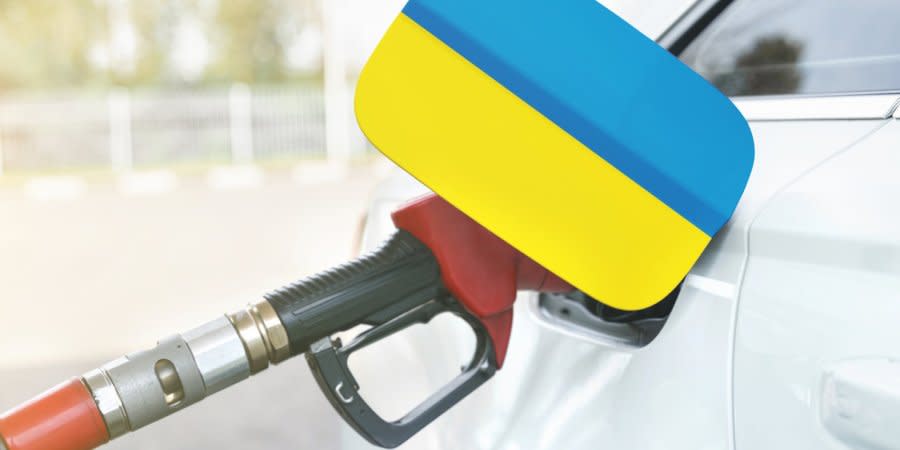How long are fuel shortages in Ukraine expected to last?

- Oops!Something went wrong.Please try again later.
Until certain issues related to major European ports are resolved in mid to late May, high prices and restrictions on fuel sales are expected to continue.
Read also: Who buys Russian oil
In late April, Economy Minister Yulia Svyrydenko reassured Ukrainians that petrol shortages in Ukraine will be dealt with in one week, warning that retail fuel prices will, nevertheless, rise.
But a week later the petrol shortages have become even more severe, and have been accompanied by further price hikes. People have had to wait in lengthy queues in order to pay as much as UAH 60 ($2) per liter of petrol.
The fuel scarcity has extended even to regions where the situation was relatively stable before. A grey petrol market has started to emerge, with various organizations skirting restrictions with cashless payments and other such schemes.
When will the shortages end? NV Business investigated to find out.
Ports are to blame
According to former acting Economy Minister, Pavlo Kukhta, Ukraine consumes around 5,000 tons of petrol and 15,000 tons of diesel per day.
“As per the Economy Ministry, both private and public stockpiles have 92,500 tons of petrol and 81,400 tons of diesel remaining.
Meaning that we have enough petrol for 20 days, and only 5-6 days’ worth of diesel left,” Kukhta wrote in a column for NV on May 9. It looks like Ukraine’s fuel industry is struggling to deal with these shortages.
Read also: Azerbaijan to provide Ukraine with fuel for sowing campaign, Zelensky says
Even President Zelensky is seemingly losing patience: “Early last week, we agreed that the problem with queues (at gas stations) would have been resolved by now,” he told Svyrydenko on May 7.
Svyrydenko, in turn, blamed European suppliers.
“In the last five days, we’ve been importing slightly more than (fuel) than we consume,” she said. “It turns out that Europe wasn’t ready (to satisfy Ukraine’s demand) in terms of logistics, even if the capacity itself is sufficient.”
According to Svyrydenko, EU ports like Gdansk, Constanta, Swinoujscie, and Burgas are the bottlenecks in Ukraine’s fuel supply chains. The minister suggested using diplomatic channels to request that the EU prioritize Ukraine-bound energy shipments in these ports.
When it comes to petrol and diesel deliveries around Ukraine proper, logistical difficulties have been resolved, said Svyrydenko. On May 6, Ukraine and Poland agreed to suspend customs checks at the border for fuel trucks.
Two Ukrainian gas station operators – OKKO and WOG – have recently increased the limits on fuel purchases for their long-term customers.
Retailers shy away from commenting on the ongoing shortages, and urge their clients to use proprietary mobile apps to track which nearby gas stations have fuel available for sale in real time.
Skyrocketing prices
Besides the shortages themselves, constant price hikes are presenting a problem as well. Since last week, fuel prices are regulated on a marginal price basis, in accordance to a specific formula. This did limit price growth, but is eating into the profit margins of Ukrainian fuel businesses. It’s being felt even more acutely because of all the depots and refineries that were destroyed by Russian missile strikes. Old supply chains relied on fuel imports from Belarus, and have also since been disrupted.
Responding to the private sector’s concerns, the cabinet increased the median price for a liter of fuel, which is used to calculate marginal retail prices, last week. The marginal price of diesel was increased to UAH 42.63 ($1.42) per liter, and petrol – to UAH 37.69 ($1.26) per liter. Most major chains tend to stay within these price constraints.
Some, however, attempt to skirt price controls. In some regions, certain gas stations charge as much as UAH 55-60 per liter of petrol.
Read also: Invading Russian forces shell residential buildings, oil refinery in Luhansk Oblast
“Deadbeats,” Serhiy Kuyun, head of energy consulting agency A-95, laconically described these price gougers. According to him, mostly individual gas stations and small chains have been spotted ignoring fuel price controls. Unsurprisingly, there are no queues at those gas stations.
“What’s the point in (government price) regulations if they are being ignored with no penalties?” Kuyun wrote.
It’s unclear if this approach will spread – most retailers stay within the government-mandated price ranges. At the same time, some major chains have shifted focus to the wholesale market, which remains unregulated, according to Kuyun.
Prices are sure to skyrocket, should the cabinet lift existing controls. The government is well-aware of this, and makes no indication that the policy will change anytime soon.
“The state will continue to regulate fuel prices, enabling Ukrainians to access (this) resource at a reasonable cost,” Svyrydenko said recently.
Is there a way to satisfy both consumers and retailers?
“We realize that Ukrainians are trying to get a full tank (of fuel) or purchase an additional reserve (of fuel), prompted by the temporary shortage. This (behavior) creates additional pressure (on the market). But I hope that, starting next week, (gas station) queues will shrink, if not vanish completely,” Svyrydenko said.
Read also: EU confirms plans to impose ban on Russian oil
Andriy Herus, head of the parliamentary energy committee, made a similar forecast earlier. According to him, the shortages can be expected to wane starting from mid-May.
“It will be possible to fill up at gas stations without the current market tensions,” said Herus.

